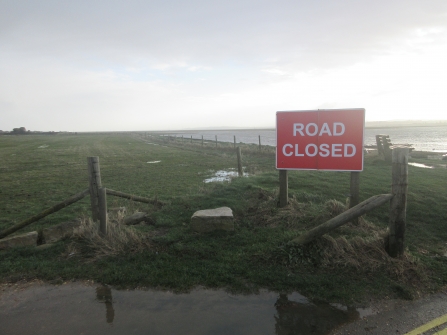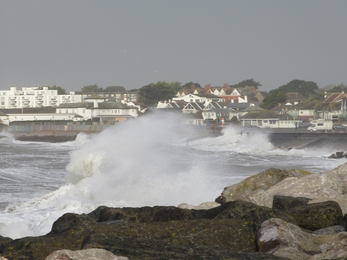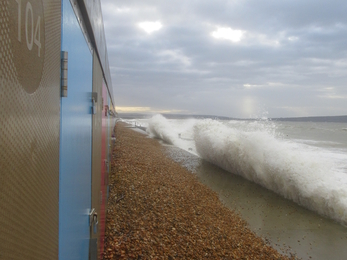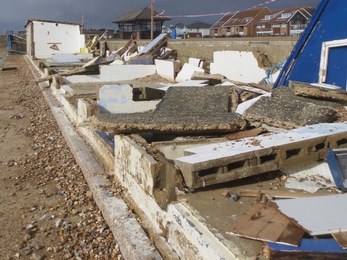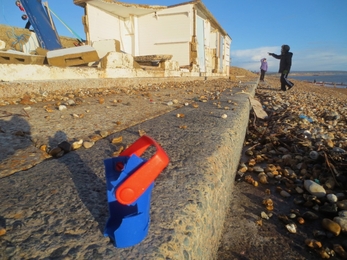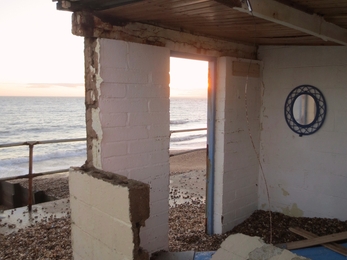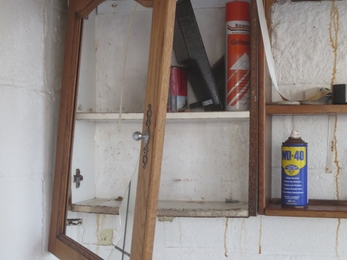After a wind-battered weekend, Monday dawned and the rain had at last subsided. My running shoes were beckoning, so I decided to multitask and grabbed both my camera and my dog Betsy. Having checked the tide times, I had a couple of hours before the first high tide - we have double high tides here due to the Isle of Wight. So, giving myself a head start, we drove round to the base of Hurst Spit; the Western entrance to the Solent. The shingle spit provides protection from the approach via Milford on Sea.
Crossing over the crabbing bridge and Danestream to reach the top of the shingle bank, we were immediately buffeted by the wind and assaulted by the hungry sea, which was clawing at and crashing on the pebbles. Land, sea and air had lost their definition: the air was full of salt-laden spray and froth; the pebbles were liquid, flowing from beach to water and then flung into the air; the sea was trying to escape in any way it could. Instantly, everything was covered in a salty coating, making photography a speedy affair - I found some plastics abandoned by the sea on the beach and hastily took a few photos.


